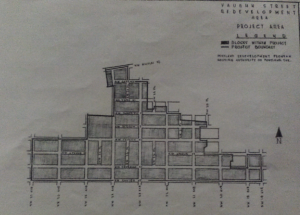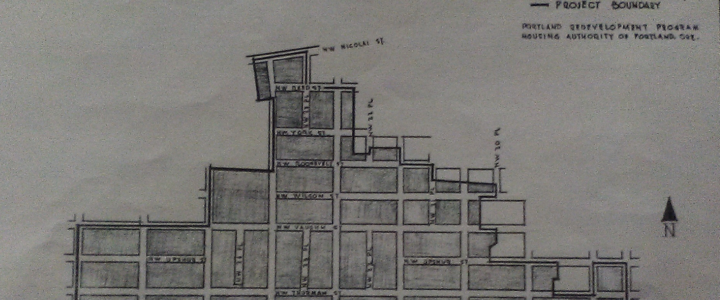
The 1950s Vaughn Street Redevelopment Area’s project area included 44 blocks (35 whole blocks and 9 partial blocks details shown on map to the right). They spanned NW 18th to 27th and NW Savier to York. Three areas in the city of Portland were surveyed for urban renewal, and according to a Housing Authority of Portland report in August 1952 “the Vaughn Street area was most in need of such a plan”. Albina and South Portland were razed; Vaughn Street avoided Urban Renewal in 1952–53. While many Slabtown homes were lost to the Fremont Bridge anchors, the 1963 highway project, and the 1970s I-505 debacle, in the end rapid population growth and high land values sealed the fate of these “blighted” homes.
The Vaughn Street urban renewal area intended to maintain many commercial structures in good repair, “…but all residential structures will have to be removed because the area will be redeveloped for commercial and industrial purposes.” The redevelopment agency intended to help renters find other adequate housing within their means. Rental properties, such as the Fairmont Hotel at 26th and Upshur, would not have yet had landmark status and would have met the wrecking ball. Although the judges considered the area blighted, activist residents defeated the effort in the courts and they rallied—150 strong—and won at City Hall on May 26, 1953. Protecting the dwellings surveyed by HAP, housing 900 families (53% of whom owned their homes), the activists were described as having a “vindictive resistance toward the encroachment of industry”.

